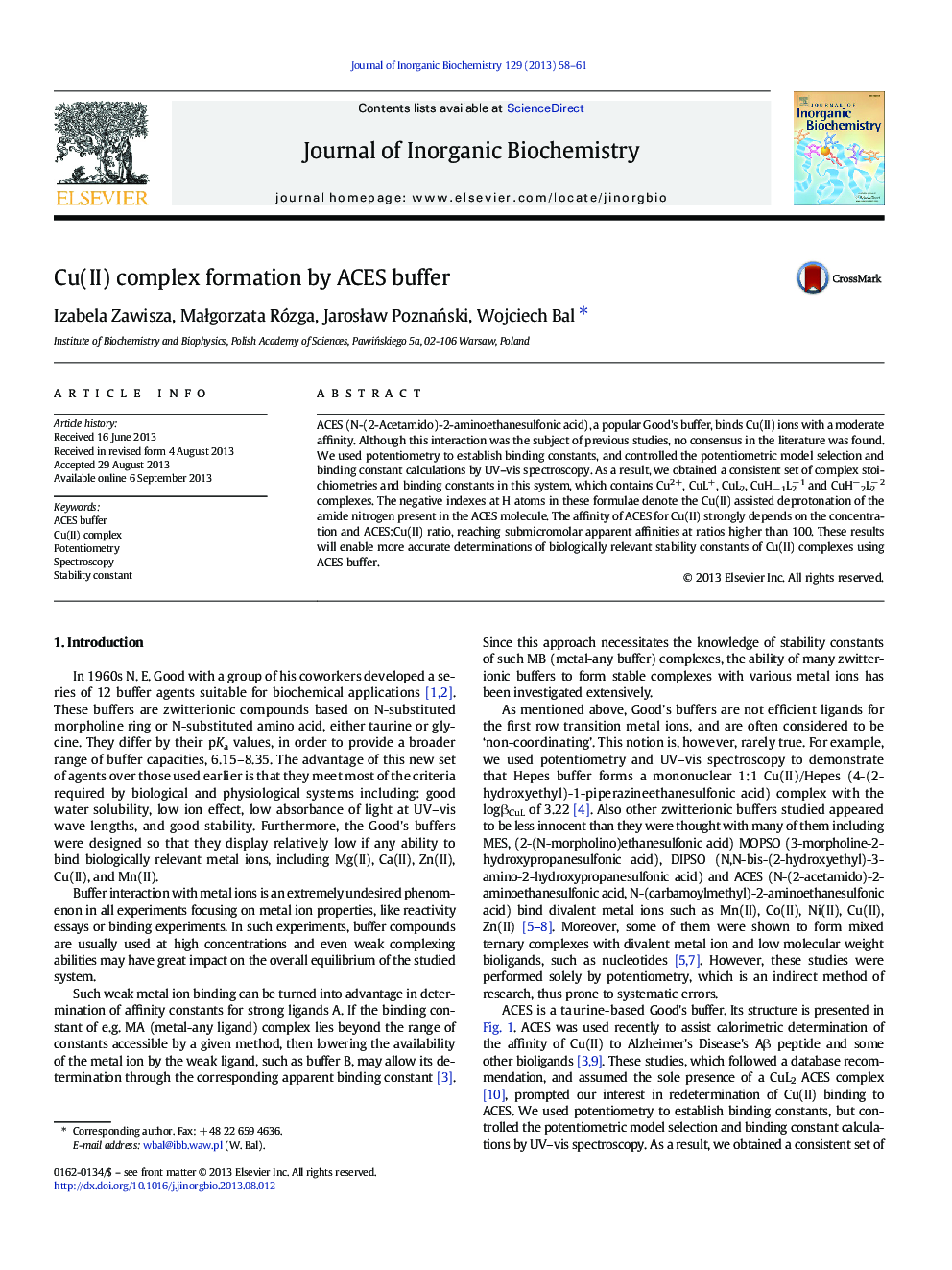| Article ID | Journal | Published Year | Pages | File Type |
|---|---|---|---|---|
| 1317492 | Journal of Inorganic Biochemistry | 2013 | 4 Pages |
•ACES, a popular Good's buffer, binds Cu(II) ions with 1:1 and 2:1 ratios.•Main complexes involve coordination of amine and deprotonated amide nitrogens.•Submicromolar apparent affinities are reached at ACES:Cu(II) ratios higher than 100.
ACES (N-(2-Acetamido)-2-aminoethanesulfonic acid), a popular Good's buffer, binds Cu(II) ions with a moderate affinity. Although this interaction was the subject of previous studies, no consensus in the literature was found. We used potentiometry to establish binding constants, and controlled the potentiometric model selection and binding constant calculations by UV–vis spectroscopy. As a result, we obtained a consistent set of complex stoichiometries and binding constants in this system, which contains Cu2+, CuL+, CuL2, CuH− 1L2− 1 and CuH−2L2− 2 complexes. The negative indexes at H atoms in these formulae denote the Cu(II) assisted deprotonation of the amide nitrogen present in the ACES molecule. The affinity of ACES for Cu(II) strongly depends on the concentration and ACES:Cu(II) ratio, reaching submicromolar apparent affinities at ratios higher than 100. These results will enable more accurate determinations of biologically relevant stability constants of Cu(II) complexes using ACES buffer.
Graphical abstractACES (N-(2-acetamido)-2-aminoethanesulfonic acid) binds Cu(II) ions using amine and deprotonated amide nitrogens, in the submicromolar affinity range.Figure optionsDownload full-size imageDownload as PowerPoint slide
